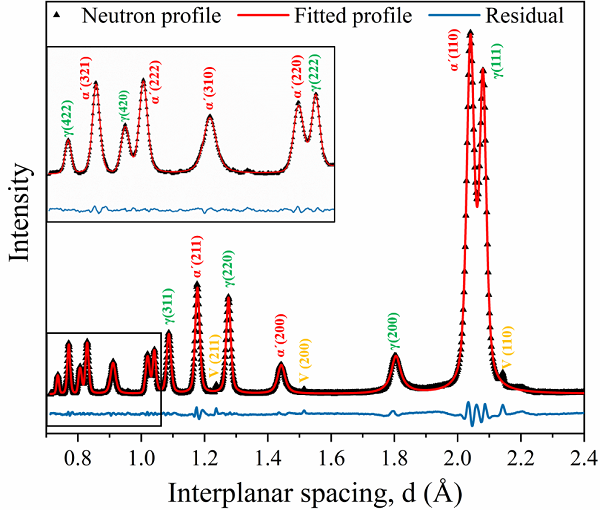First User Experiment Published on Science
Date: 2020-05-10 Author:
Low cost alloy materials with excellent properties have been the basis and reliance for the development of automobile, aviation and other industries. However, it is often difficult to combine strength (carrying capacity) with fracture toughness (fracture resistance). In recent years, Prof. Huang Mingxin's team has worked with the CSNS General Purposed Powder Diffracterometer (GPPD) team to systematically characterize and study a series of samples. Using neutron diffraction as the research method, the roles of unstable austenite and dislocation in the fracture behavior of low-cost D&P steel have been studied in depth.
Neutron diffraction has the advantages of high penetrability, high resolution and nondestructive, which can be used to analyze the structural characteristics of complex materials with texture. With the support of THE GPPD team, Huang's team effectively obtained important microscopic parameter information such as phase volume fraction and dislocation density of low-cost D&P steel through neutron diffraction spectrum. Supported by GPPD data, Huang Mingxin's team creatively proposed a new mechanism of grain boundary stratification cracking and toughening induced by high yield strength, which broke the traditional understanding that increasing strength would reduce fracture toughness of materials. According to this new mechanism, low-cost D&P steel with high yield strength (~2 GPa), excellent toughness (102 MPa· M1/2), and good ductility (19% uniform elongation) was obtained.
The crystal phase in D&P steel has large distortion, defect and optimization, which requires high neutron diffraction data. The high resolution of GPPD and good diffraction peak pattern guarantee the data quality needed in this study. At the same time, in order to eliminate the influence of factors such as selection on data analysis, GPPD specially designed a rotating sample rod for this kind of experiment.
The full publication can be found here: https://science.sciencemag.org/content/368/6497/1347




